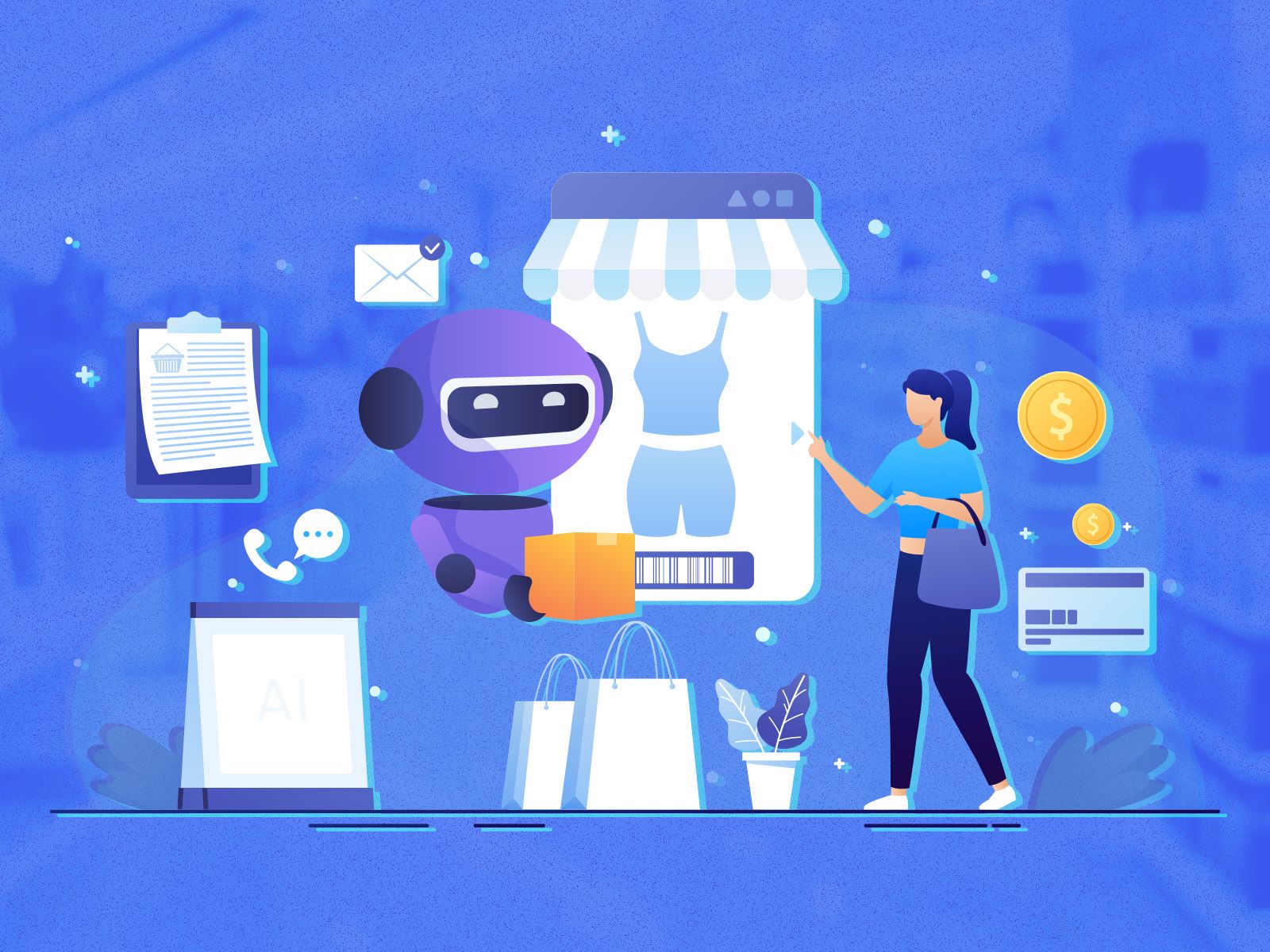How to Enhance Your App With NLP Technology

Illustration: © AI For All
Natural language processing (NLP) is an arm of computer science, specifically artificial intelligence (AI), responsible for giving computers the capacity to understand, manipulate, and interpret human language. It aims to fill the gap between computer understanding and human communication.
Although NLP is not a new science, the technology is swiftly advancing due to great interest from businesses. Tons of text information is generated in the world every day and business owners see value in using it for their needs. For example, automatic NLP analysis of customer feedback will enable the company to find out how satisfied their customers are and draw conclusions about future improvements. And this is only one of the examples.
This article will help you identify how you can take advantage of natural language processing for your business.
Key NLP Tasks
Language models are machine learning solutions that manipulate text data to achieve various business goals. NLP has two primary divisions of tasks: Natural Language Understanding and Text Generation. The language models perform different tasks in NLP. The most popular of them include the following:
- Name Entity Recognition (NER) – NER extracts, identifies, and places entities into categories. The use cases include SEO content classification, academic research, customer support, and lab report analysis.
- Sentiment Analysis – Text classification is one of the primary steps in sentiment analysis. Sometimes it’s better to perform data preprocessing techniques, f.e. stemming and lemmatization on the corpus (the entire collection of text), then the result is passed on to a machine-learning algorithm for further classification.
- Keyword extraction – Keyword extraction allows you to quickly find the most important words and phrases in large data sets, including standard documents and reports, social media comments, news, and more. This helps in summarizing the text material.
- Text Summarization – Text summarization solves the problem of summarizing text data and reducing the words of a document without changing its meaning. By filtering inappropriate material, algorithms extract the most relevant details from the text. Various news aggregator apps are the most popular business cases of text summarization algorithms.
- Chatbots – Unlike old-school rule-based bots, NLP-based chatbots are able to provide smoother communication with the user because it analyzes not only keywords but also intent, entity, context, and session.
Let’s see how exactly these NLP tasks can benefit your business applications.
Speech Recognition Feature
There is a certain difference between speech recognition and voice recognition, but NLP helps to cope with both tasks. Speech recognition involves the ability of the system to recognize exactly what was said, that is, to translate audio into text. Voice recognition or diarization makes it possible to distinguish speaker identity, that is, to determine that this text refers to speaker A, and the other to speaker B.
You can use voice recognition to achieve security measures such as voice biometrics and speech recognition to create virtual assistants and chatbots that understand voice commands and automate communication.
Any speech recognition application is founded on the Automatic Speech Recognition (ASR) technology that obtains words and grammatical meaning from the audio, manipulates it, and provides a specific form of system output. In speech recognition, speech-to-text (STT) conversion must be done to apply natural language processing. The STT converter is the most crucial component of the whole AI process.
When thinking of how to build a speech recognition system, you need to choose a suitable deployment model and employ the required third-party SDK. There are two deployment models you can use: cloud and embedded. The cloud is the most convenient way to achieve voice recognition. Its advantage is that it will save you lots of storage space, but it requires an internet connection to work.
You can use the embedded model offline because it is stored on your device. The advantage of the embedded model is speed because it is not located on a server. But it would be best if you had lots of storage space on your device to store all audio elements locally.
Some key benefits of incorporating speech recognition into your app are increased productivity in business, faster capture of speech than typing, the ability to interact with individuals with sight or speech impairment, and reduced operational costs by automating business processes.
Autocomplete and Autocorrect with NLP
Autocorrect is a software feature that automatically suggests or corrects spelling or grammatical errors as you type. You have probably come across this feature in many messaging and writing assistant applications. There are four primary steps in building a functional autocorrect model to correct spelling errors.
1. Identify the misspelled word – If a word is not found in a dictionary, it is flagged as incorrect.
2. Edit the string – Editing is an operation done on a string to change it into another string. The types of edits include:
- Insert (add a letter)
- Replace (change one letter to another)
- Delete (remove a letter)
- Switch (swap adjacent letters)
3. Filter candidates – We only consider correctly spelled words from our list and compare them to words in a general dictionary, then filter out words that don’t appear in the available lexicon.
4. Compute word probabilities – With our list of words, we can compute probabilities and find the most probable word from our candidates. Modern NLP models trained on deep learning technologies are smart enough and can filter out the best option for replacing a word, by looking at the context.
Autocomplete is a user interface feature based on Text Generation models in which an application predicts a phrase or word that the user wants to type without the user having to type it entirely. It aims to predict what the user desires to type and add sections of the text automatically. The search autocomplete is a vital feature on e-commerce websites. It helps consumers find the exact item while providing full information about it and answering their questions faster and more accurately.
NLP Search and Document Processing
If your business involves a lot of documents, for example, you’re developing a fintech application, then automated document processing and systematization are exactly what will help you be more efficient.
The ability of NLP to find patterns in large volumes of data allows this technology to be used for eliminating manual work from the search process. Your clients or employees can find the information they need much easier and faster with a solution capable of processing various data sources in automatic mode.
How does it work? First of all, you need to connect and crawl all of your unstructured and structured data. Next, a unified search index is created, which ensures a uniform ranking of search results, regardless of their source. The NLP module analyzes the request and the content of documents by many variables, evaluating not only keywords but also user intent. This can be done using entity extraction and intent classification. Relying on intelligent scoring algorithms, the system provides a tailored response to each user.
Intelligent search saves significant business time and money and improves decision-making. For example, if a bank manager is going to issue a loan to a customer, he wants to collect all the information about the client to assess risk. But customer data is often scattered across different databases in structured and unstructured formats (transaction history, credit history, etc.). NLP-based search will allow you to quickly analyze all connected data sources and provide results to the manager.
How to Start Implementing NLP Into Your App
To implement NLP into your app, first, you need to hire experienced developers to analyze your project, assess all risks, and offer a suitable solution depending on your unique circumstances and business model. Here are the steps involved in creating an NLP model.
Collecting Textual Data
The first step is to collect the textual data that we need to work with. Based on this data, the model will be trained. If you don’t have existing data, then you will need the help of experienced engineers who will find the datasets most relevant for your business task.
Tokenization
Tokenization is the next step, and it involves splitting a group of text into words or sentences.
Stop Words Removal
Stop words include words such as “a,” “is,” “are,” or “the.” These words do not carry much meaning in a textual data set, so you need to remove them. However, this step is often optional. For example, for sentiment analysis, where an opinion is detected, it’s crucial to have the original text, because if we delete “not”, it will greatly affect the result (“I like” vs. “I do not like”).
Stemming
Stemming is converting all the verbs and plurals of a specific word into its root form. Search engines use the root forms to find the most appropriate resource for a search query despite the verbs or plurals used. But this step can also be optional and depends on the specifics of the project.
Vectorization
Vectorization involves converting all text tokens into numerical vectors before feeding them into the machine-learning model. Nowadays mostly deep learning models are used for producing reliable results in NLP.
NLP Model Training
After converting the text tokens into numerical vectors, you can place this dataset into classes or clusters and start training your model.
Many enterprises are adopting NLP technology because of its excellent business and growth opportunities. The ability to respond promptly and helpfully to customer queries is crucial for any business today. So, find experienced developers to help you implement NLP into your applications and take advantage of this innovation for your business.
Natural Language Processing (NLP)
Chatbots
Author









